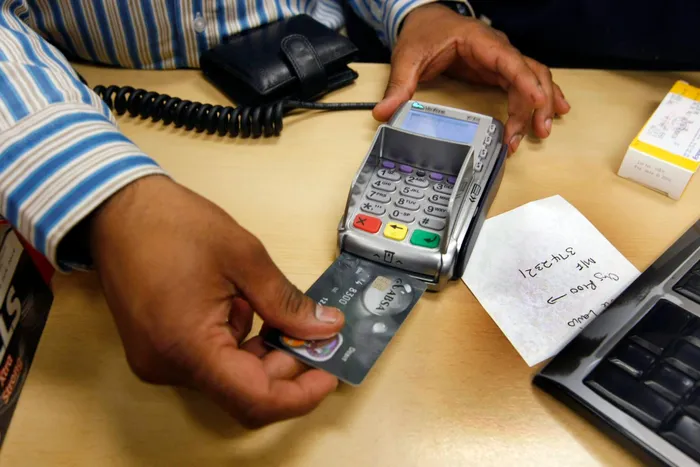BankservAfrica Economic Transactions Index rebounds, signalling hope for South Africa
FINANCIAL SERVICES

The index, which measures the value of electronic transactions processed through BankservAfrica on a monthly basis at seasonally adjusted real prices, rebounded to an index level of 138.3 in May, a rise from 136.2 recorded in April.
Image: Simphiwe Mbokazi Independent Newspapers
After months of stagnation and uncertainty, South Africa's economic landscape has witnessed a notable shift in the BankservAfrica Economic Transactions Index (BETI).
The index, which measures the value of electronic transactions processed through BankservAfrica on a monthly basis at seasonally adjusted real prices, rebounded to an index level of 138.3 in May, a rise from 136.2 recorded in April.
This marked a welcome break from an eight-month trend of inactivity, sparking hope for sustained economic recovery.
According to Shergeran Naidoo, BankservAfrica’s head of stakeholder engagements, this improvement could signify a turning point.
“The BETI improved to an index level of 138.3 in May, up from the 136.2 recorded in April, breaking an eight-month trend of sideways movement,” Naidoo said.
However, experts urged caution, emphasising that while this uptick was encouraging, it may be too premature to declare a definitive shift in the economic landscape.
“While encouraging, it is too early to call an imminent change in trend as the economic environment has notchanged materially in May and notable risks remain,” cautioned Elize Kruger, an independent economist.
“Furthermore,a part of May’s improvement stems from wiping out the weakness evident in the index in April.”
The recovery in economic activity in May followed the month of April, when the world was hit by the USannouncement of punitive import tariffs and subsequently, an evolving trade war developed - with a great deal ofvolatility from day to day – as markets plummeted, and global and local growth forecasts were slashed.
Confidence levels across the globe and in South Africa were knocked by the sheer uncertainty that thesedevelopments brought. However, with some tariffs put on ice and several countries entering more favourabletrade agreements – averting a worst-case scenario – markets responded with relief rallies and a cautious return ofconfidence, albeit from a low base.
“Still, compared to a year earlier, the BETI is 1.4% higher and the uptick remains encouraging as all of itscomponents increased in value terms during May,” said Kruger.
The most notable performances were the heavy weighted EFT credits, Real Time Clearing and PayShaptransactions.
The number of transactions cleared through BankservAfrica in May reached an all-time high of 176.3 million compared with 167.9 million in April, surpassing the previous record of 172.4 million in March.
The standardised nominal value of transactions also increased to R1.351 trillion in May compared to R1.320trln in April, with the resultant average value per transaction covered in the BETI increasing to R7 618, higher than April’s R7 485.
All payment streams increased in both volume and value terms during May, thus a broad-based improvement is noted.
In addition to BETI's positive news, two other economic indicators have shown promising signs.
The S&P Global South Africa Purchasing Managers’ Index (PMI) rose to 50.8 in May, reflecting a significant uplift in private sector output over the past four years. Meanwhile, the vehicle sales market recorded an impressive 22.0% year-on-year increase, with new car sales experiencing a remarkable surge of 30.0% yearly.
Yet, while these metrics paint a more optimistic picture, concerns linger regarding the broader economic context. The seasonally adjusted Absa PMI remains in contraction territory at 43.1 index points for the seventh consecutive month, revealing a mixed outlook for various sectors.
Economic forecasts remain conservative, with economists revising 2025's growth rate down to around 1.2%, from earlier estimates of 1.7%. Some predictions, such as those from Carpe Diem Research, are even more cautious, projecting growth at only 1.0% for the year.
Nevertheless, the positive side includes stable inflation levels, currently at 2.8% — comfortably within the South African Reserve Bank’s target range — raising hopes for future interest rate cuts that could further stimulate spending.
Kruger also expressed optimism regarding consumers’ purchasing power, saying South Africans could see a tangible improvement in real incomes as the average salary increases is projected.
“The low inflation rate will play a key role in supporting the recovery of salary earners’ purchasing power. Withaverage salary increases expected to be between 5% and 6%, 2025 will be the second consecutive year of real increases in salaries, which should support consumer spending,” Kruger said.
BUSINESS REPORT